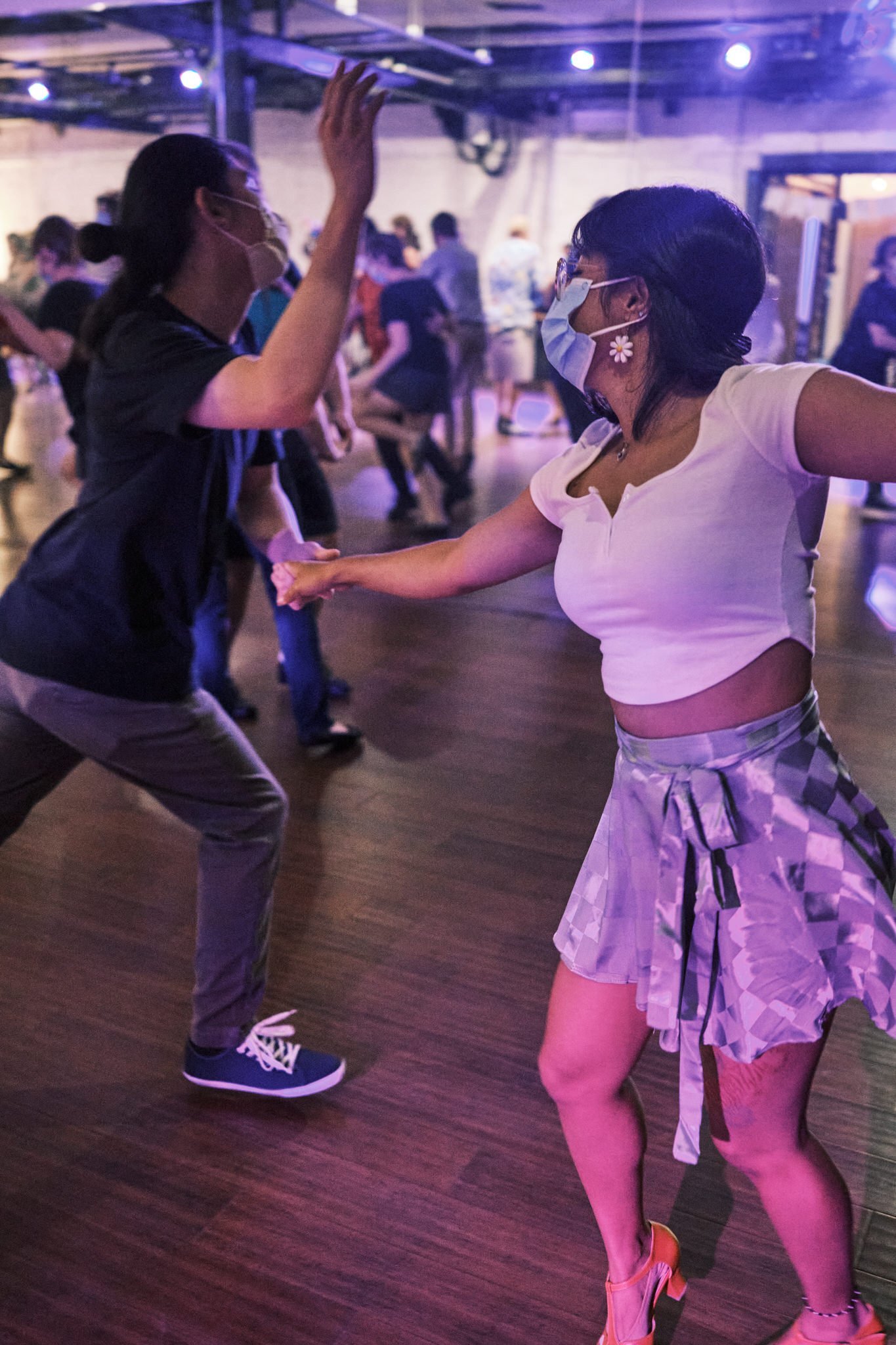A vintage jazz social dance
what is lindy hop?
Lindy Hop, a vintage dance, is an African American dance form created in Harlem New York between the 1920s and 40s, most famously danced in the Savoy Ballroom. It is a mix of several dances that include partner dances and solo dances like jazz, tap, the Charleston, and the breakaway. Lindy Hop is part of the Jazz dance continuum, which are dances that developed from the music and dance of Africans that were forcibly taken from their homes and enslaved all around the world. Some very obvious characteristics of dances in the Jazz dance continuum that you will notice with Lindy Hop are individuality and community.
Individuality - We encourage people to be themselves and express themselves, that way the art is true to you. When the art reflects its people, it is dynamic and relevant and continues to live and evolve.
Community - It is easiest to see this when we do jam circles. This is when a single person, a couple, or even a small group go into the middle of a circle of people and dance while everyone around them cheers and claps for them. But, you can feel the community as soon as you enter our space. We are a dance family.
what is a social dance?
A social dance means that you don’t have to bring your own partner. You get to meet and dance with as many partners as you want. Dancing with different people is inspiring and a lot of fun!
why do people love hot jam?
Its relaxed and inviting atmosphere.
The wide variety of dance levels, from absolute beginners to advanced.
The highly danceable wood floor, where people dance Lindy Hop, Balboa, Blues, Charleston, and Collegiate Shag.
Experienced DJs playing the classic swing favorites of Count Basie, Benny Goodman, Sidney Bechet, and many more.
Free beginner lessons.
what is hot jam?
Hot Jam is a weekly dance that happens every Monday that also hosts supplemental workshops. It was established in 2005 by Bobby White, Michelle Chaff, and Nima Farsinejad as a place for dancers by dancers. It is currently owned by Christopher Cohen and Rachel Pitner, and it still has the mission to support and grow our dance community.



